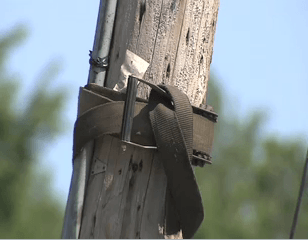 Australia’s march towards an all-fiber future took an important step last week when the government announced a wide-ranging agreement with Telstra, the country’s largest phone company, to use Telstra’s existing infrastructure to help construct a national fiber network.
Australia’s march towards an all-fiber future took an important step last week when the government announced a wide-ranging agreement with Telstra, the country’s largest phone company, to use Telstra’s existing infrastructure to help construct a national fiber network.
After two years of negotiations, Australian Prime Minister Julia Gillard on Thursday announced an $11 billion deal between Telstra and NBN Co to allow NBN to use Telstra’s existing conduits, poles, and network facilities to provide a foundation for the construction of the all-fiber network and the removal of existing copper wiring.
The deal is expected to save the government millions by not having to construct redundant facilities.
The network is expected to take a decade to complete, and will provide optical fiber broadband to at least nine out of ten Australian households. The project will make Australia a global broadband leader, far ahead of the United States and Canada and most of western Europe.
As part of the deal, Telstra agreed to pay $2 billion for upgrades to its own infrastructure in preparation of migrating customers to the NBN. Telstra’s CEO, David Thodey, said the agreement ended the uncertainty surrounding Telstra’s possible association with NBN and will allow his company to focus on customer service.
Gillard and Communications Minister Stephen Conroy turned on Australia’s first connection to the NBN in May at the Presbyterian Ladies College in Armidale in the east Australian state of New South Wales.
The town is one of five test markets where the NBN will first operate. Areas in Melbourne, Townsville, coastal New South Wales and South Australia will also be switched on in coming months.
[flv width=”512″ height=”308″]http://www.phillipdampier.com/video/Nine Network NBN Switched On 5-11.flv[/flv]
Nine Network in Australia covered the opening of the country’s National Broadband Network in Armidale earlier this year, and what it means for Australians as fiber broadband replaces older technology. The opposition gripes the government is spending too much on the network. (7 minutes)
Liberal opposition to the NBN has been fierce in some quarters, with Opposition communications spokesman Malcolm Turnbull claiming the government is overspending on a network that delivers fiber straight to the home. Gillard accused the conservative opposition of seeking to rip installed fiber straight out of the ground if they were to come to power, a charge Turnbull rejects as ridiculous.
He prefers a “fiber to the neighborhood” approach, similar to AT&T U-verse, which he says will bring good enough speeds to Australians faster and cheaper than an entirely fiber based network would. But fiber proponents claim the costs will come down as the network construction ramps up, delivering economy of scale. The government also believes fiber to the home is more upgradable and more reliable than a hybrid fiber-copper network.
Most of all, Australians are celebrating the imminent end of usage-based pricing, fair access policies that reduce speeds of heavy users to near-dial-up, and the fact they are likely to be among the top-five ranked broadband nations globally when the network is complete.
[flv width=”640″ height=”500″]http://www.phillipdampier.com/video/Sky News ABC NBN and Telstra Achieve Deal 6-23-11.flv[/flv]
Sky News and ABC report on the government’s deal with Telstra to retire the nation’s copper wire network and work together to build fiber to the home to virtually every Australian. (7 minutes)


 Subscribe
Subscribe





